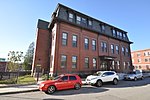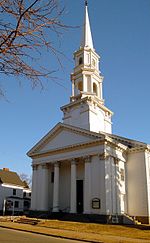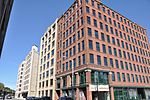Raid on Haverhill (1708)

The Raid on Haverhill was a military engagement that took place on August 29, 1708, during Queen Anne's War. French, Algonquin, and Abenaki warriors under the command of Jean-Baptiste Hertel de Rouville descended on Haverhill, then a small frontier community in the Province of Massachusetts Bay. In the surprise attack, 16 people were killed and another 14 to 24 were taken captive. A rapid militia muster gave chase, and in a skirmish later in the day, nine of the French and Indian party were killed and some of their prisoners escaped. Haverhill was not the original target of the raiders. Expecting a larger Indian contingent, French authorities planned to engage in a series of raids on the communities of the Piscataqua River. However, the unwillingness of some Indian tribes to participate in the expedition forced the French to reduce the scope of the operation and choose an easier target. The raid was more costly to the French than previous frontier raids like that in 1704 on Deerfield, Massachusetts because the province had been warned of the raiders' advance.
Excerpt from the Wikipedia article Raid on Haverhill (1708) (License: CC BY-SA 3.0, Authors, Images).Raid on Haverhill (1708)
Park Way, Haverhill
Geographical coordinates (GPS) Address Nearby Places Show on map
Geographical coordinates (GPS)
| Latitude | Longitude |
|---|---|
| N 42.776111111111 ° | E -71.077777777778 ° |
Address
Park Way 1
01830 Haverhill
Massachusetts, United States
Open on Google Maps









